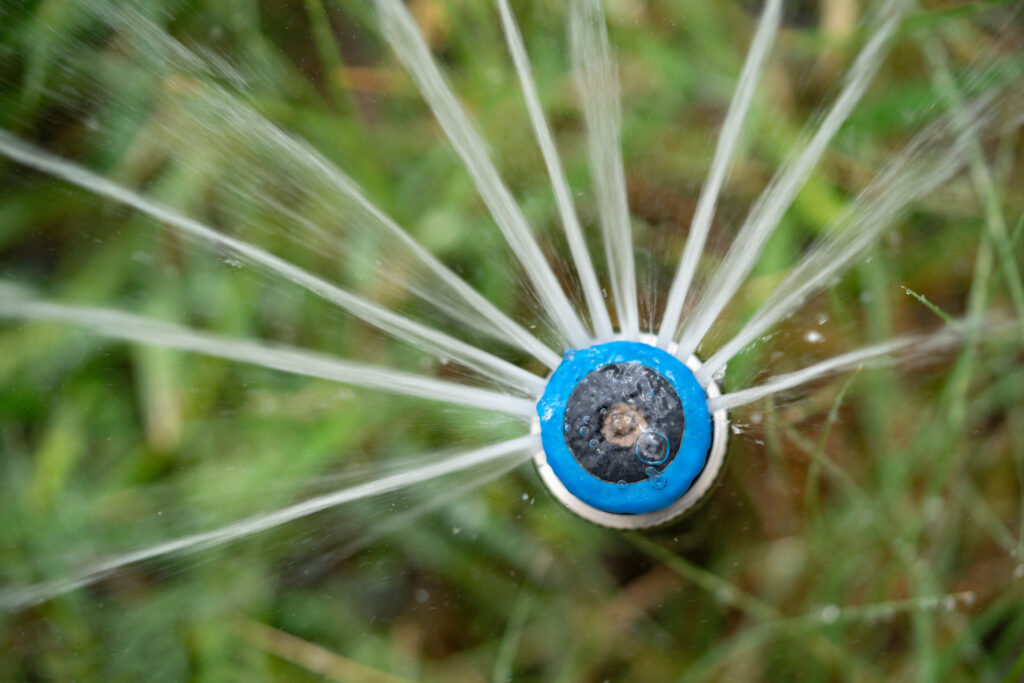Cutting-edge water conservation: Houston and Corpus Christi adopt WaterMyYard app
Residents can eliminate lawn-watering guesswork with Texas A&M AgriLife’s innovative app
Residents in Houston and Corpus Christi can now use the WaterMyYard app that guides the when and how much for watering lawns based on localized weather.

The Texas A&M AgriLife Extension Service’s app WaterMyYard is a free tool designed to take the guesswork out of when and how long to run your irrigation system.
The program has provided irrigation recommendations for homeowners in North Texas since 2013. Since then, it has expanded both in North Texas and to other areas of the state including the greater Houston area, cities in West Texas, such as Lubbock and San Angelo, the Bryan-College Station area and a large area surrounding Austin.
Guy Fipps, Ph.D., PE, AgriLife Extension statewide irrigation specialist in the Texas A&M Department of Biological and Agricultural Engineering, Bryan-College Station, said Houston Public Works and Corpus Christi Water have just joined the WaterMyYard program. This now expands the app’s availability to almost 1 million water users in those areas.
“This is a good opportunity for people to utilize the tool because both cities are currently under watering restrictions,” Fipps said. “Such restrictions are automatically incorporated into the watering recommendations that WaterMyYard produces for users.”
WaterMyYard network grows
WaterMyYard currently has about 45,000 users, Fipps said. Water savings from the program statewide are estimated to be 2.7 billion gallons per year, enough to supply 25,274 households. Water conservation equates to a water cost savings of $10.1 million for WaterMyYard users, roughly $230 per household.
Houston Public Works and Corpus Christi Water purchased specially equipped weather stations, which are now installed and in operation. The weather station in Houston fills in a large hole for that area, Fipps said. Other similar weather stations in the greater Houston area were provided by the Harris Galveston Subsidence District, the Fort Bend Subsidence District and West Harris Regional Water Authority.
To access the program, go to the WaterMyYard website https://watermyyard.org/, or the app can be downloaded from the Apple Store and Google Play. WaterMyYard is only available in sponsored areas.
“Users of the app really like the fact that it takes the guesswork out of irrigating their yards,” Fipps said. “People get all these messages about conservation, but often do not know what to do, and they appreciate the guidance the WaterMyYard app gives them.”
What WaterMyYard can do for you

The program utilizes a network of specially equipped urban weather stations that record temperature, relative humidity, wind speed, solar radiation and rainfall to calculate local evapotranspiration rates, Fipps said. Evapotranspiration, or ET, is the science-based method for determining the water requirements of plants.
The network now consists of about 60 ET weather stations along with an expanding network of rain gauges that determine weekly watering recommendations across 12 service areas in the state.
Each service area has a sponsor such as the city, local water utility or water district helping cover the costs of the program and purchasing the weather stations for their areas, Fipps said.
Irrigation systems apply water at different rates, which is referred to as the precipitation rate. The precipitation rate typically varies from 0.25 to 1.5 inches per hour in home irrigation systems. When setting up your WaterMyYard account, selection of the correct value for your system is critical.
WaterMyYard has an easy-to-use tool called the Precipitation Rate Wizard to assist in choosing the precipitation rate that is appropriate for your irrigation system. If you already know your precipitation rate, you may enter it directly, Fipps said. There is also an option for hose-ended sprinklers for homeowners who do not have a permanent irrigation system.
Rainfall is often the most variable weather measurement. WaterMyYard uses the rainfall recorded at the closest weather station, but users can also enter their own measured rainfall to improve the watering recommendation, he said.
“One of the great things about WaterMyYard is that it not only tells you if you need to water, but how many minutes you should run your irrigation system and how many days per week to water,” he said. “Users also really like the fact that it will tell them when it is time to start watering again after it rains. Irrigating only when needed is a key part of conservation when it comes to watering lawns.”


